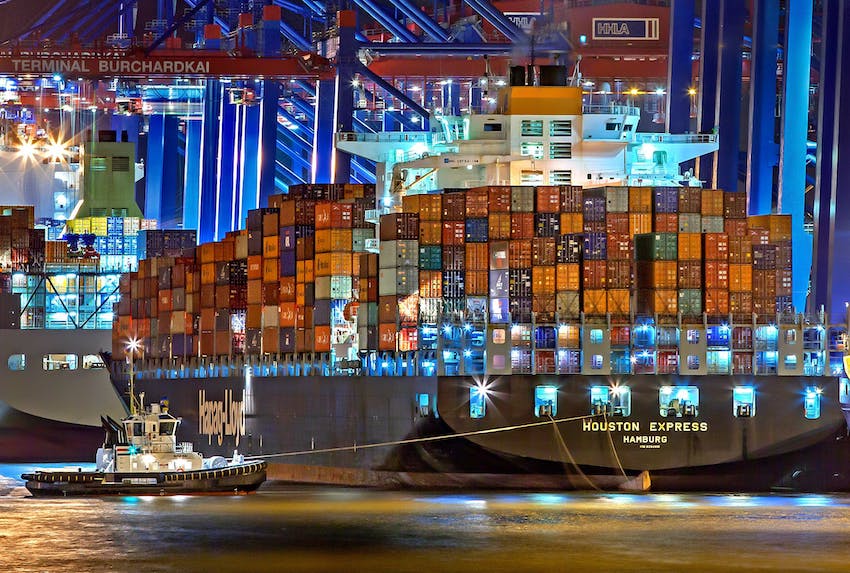
The world of trade is experiencing a profound transformation, marking the advent of Trade Facilitation 2.0. Gone are the days of paperwork-laden processes and cumbersome logistics. Instead, a new era is emerging, one characterized by data-driven efficiency and transparency. At the heart of this revolution are three key technologies: artificial intelligence (AI), blockchain, and data analytics. Together, they are reshaping how goods traverse borders, forging a path toward a more efficient, transparent, and inclusive trade landscape.
AI: The Smart Trade Partner
Imagine a world where trade documents are automatically scrutinized, risks are assessed with unprecedented precision, and customs clearance is a matter of moments. This is the promise of AI in trade facilitation. Algorithms are now being trained to comprehend intricate trade regulations, identify fraudulent transactions, and optimize the labyrinthine web of logistics routes. For instance, China’s AI-driven customs system, known as “Tianyu,” has remarkably reduced clearance times by 70%, thereby enhancing trade efficiency while trimming costs.
Blockchain: Building Trust and Transparency
Blockchain, the distributed ledger technology that underpins cryptocurrencies, holds immense potential for trade facilitation. Its inherent security and immutability pave the way for transparent tracking of goods and documents, substantially mitigating the risk of fraud and corruption. Picture a shipment of pharmaceuticals being meticulously tracked in real-time, with every step from production to delivery indelibly etched on an incorruptible blockchain. This fosters trust among stakeholders and dramatically diminishes disputes.
Data: The Guiding Light
Data serves as the lifeblood of Trade Facilitation 2.0. Through the meticulous analysis of copious trade data, both businesses and governments can glean invaluable insights into market trends, identify bottlenecks in the trade process, and fine-tune trade policies. A prime example is the World Trade Organization’s Trade Facilitation Agreement (TFA) database, enabling countries to monitor their progress in implementing trade facilitation measures. This resource assists nations in prioritizing reforms and gauging their efficacy.
Examples of Trade Facilitation 2.0 in Action
- Singapore TradeTrust: Revolutionizing Document Exchange with Blockchain
The Singapore TradeTrust initiative stands as a shining example of how blockchain technology is revolutionizing the exchange of trade documents. In the conventional trade landscape, the exchange of documents between businesses and government agencies was often a labyrinthine and time-consuming process, burdened by an extensive paper trail. With TradeTrust, this cumbersome system has undergone a radical transformation.
This blockchain-based platform creates a secure and transparent ecosystem for trade document exchange. It allows businesses and government entities to interact seamlessly, reducing processing times to a fraction of what they once were. The immutability and transparency of blockchain ensure that documents are tamper-proof, bolstering trust among stakeholders. As a result, the entire process becomes not only more efficient but also substantially more secure, with a reduced risk of fraudulent activities. Singapore TradeTrust serves as a potent demonstration of how blockchain can simplify trade processes, fostering a more efficient and secure trade environment.
- FedEx Trade Network: AI-Powered Logistics and Customs Simplification
FedEx, a global leader in logistics and shipping, has harnessed the power of artificial intelligence (AI) to redefine how international trade is conducted. Their FedEx Trade Network leverages AI-driven technologies to enhance various aspects of the trade process, from shipment visibility to customs clearance.
In the context of Trade Facilitation 2.0, FedEx Trade Network offers real-time visibility into shipments, providing businesses and customers with a level of transparency that was previously unimaginable. AI algorithms optimize logistics routes, ensuring that goods reach their destinations as efficiently as possible, thereby reducing costs and transit times. Moreover, the platform simplifies customs clearance for international trade, making it a seamless process.
By embracing AI, FedEx has transformed itself into a prime example of how advanced technologies can enhance trade facilitation. The company’s commitment to innovation and efficiency underscores the potential of AI in optimizing the flow of goods across borders.
- EU-ASEAN Trade Facilitation Project: Data-Driven Streamlining of Trade Processes
The EU-ASEAN Trade Facilitation Project is a forward-looking initiative that harnesses the power of data analytics to identify and address trade barriers and bottlenecks between the European Union (EU) and member countries of the Association of Southeast Asian Nations (ASEAN). This project exemplifies how data-driven approaches are pivotal in streamlining trade processes and promoting economic growth.
Through extensive data analysis, the project pinpoints areas where trade inefficiencies exist, enabling stakeholders to implement targeted reforms. By identifying these bottlenecks, the EU and ASEAN countries can prioritize necessary adjustments to their trade policies and infrastructure. This proactive approach not only enhances trade facilitation but also fosters economic growth by removing unnecessary hindrances to commerce.
The EU-ASEAN Trade Facilitation Project is a testament to the transformative power of data analytics in the realm of trade. It showcases how data-driven insights can drive meaningful changes in trade policies and practices, ultimately benefiting economies on a regional scale.
Trade Facilitation 2.0 for Everyone:
The impact of Trade Facilitation 2.0 extends far beyond the realm of major corporations and advanced economies. It presents a profound opportunity for small and medium-sized enterprises (SMEs) to actively participate in and benefit from global trade. Traditionally, SMEs faced significant hurdles when engaging in international commerce due to the complexities and costs associated with cross-border transactions. However, the advent of Trade Facilitation 2.0 is leveling the playing field.
By reducing costs and simplifying processes, digital trade facilitation enables SMEs to access global markets with greater ease and affordability. For example, AI-powered logistics optimization can help SMEs efficiently manage their supply chains, while blockchain technology ensures the integrity of their transactions. This newfound accessibility empowers SMEs to expand their customer base, explore new market opportunities, and thrive on a global scale.
Furthermore, developing nations stand to gain immensely from the principles of Trade Facilitation 2.0. These countries can harness the capabilities of AI, blockchain, and data analytics to bolster their trade infrastructure and attractiveness to foreign investments. By investing in technology-driven trade facilitation, developing nations can enhance their competitiveness on the global stage.
Challenges and Opportunities:
Despite its immense potential, Trade Facilitation 2.0 comes with a set of challenges that require vigilant attention and effective solutions. Chief among these challenges are cybersecurity threats and data privacy concerns. The increased reliance on digital systems and the vast amount of sensitive trade-related data exchanged create vulnerabilities that malicious actors may exploit. Addressing these issues demands robust cybersecurity measures and stringent data protection regulations.
Another challenge lies in the need for global collaboration. Trade is inherently international, and the success of Trade Facilitation 2.0 relies on the harmonization of digital trade standards and regulations across borders. Achieving this requires cooperation among governments, businesses, and technology providers to establish common protocols and ensure the interoperability of digital trade platforms.
Nonetheless, these challenges also present opportunities for innovation and collaboration. Cybersecurity can spur advancements in secure trade technologies, and data privacy concerns can lead to the development of robust encryption and authentication methods. The imperative for global collaboration fosters diplomatic and business partnerships that can strengthen international trade relationships.
Trade Facilitation 2.0 represents more than a mere technological upgrade; it marks a profound paradigm shift in the world of trade. AI, blockchain, and data analytics are reshaping the very essence of how trade is conducted, ushering in an era characterized by heightened interconnectivity, efficiency, and inclusivity in the global market.
By wholeheartedly embracing this digital transformation, governments, businesses, and societies worldwide ensure that trade remains a potent engine for economic growth and prosperity that benefits all corners of the world. As Trade Facilitation 2.0 continues to evolve, it holds the promise of a more accessible, efficient, and equitable global trade landscape that empowers businesses, supports economies, and enriches lives across the globe.






